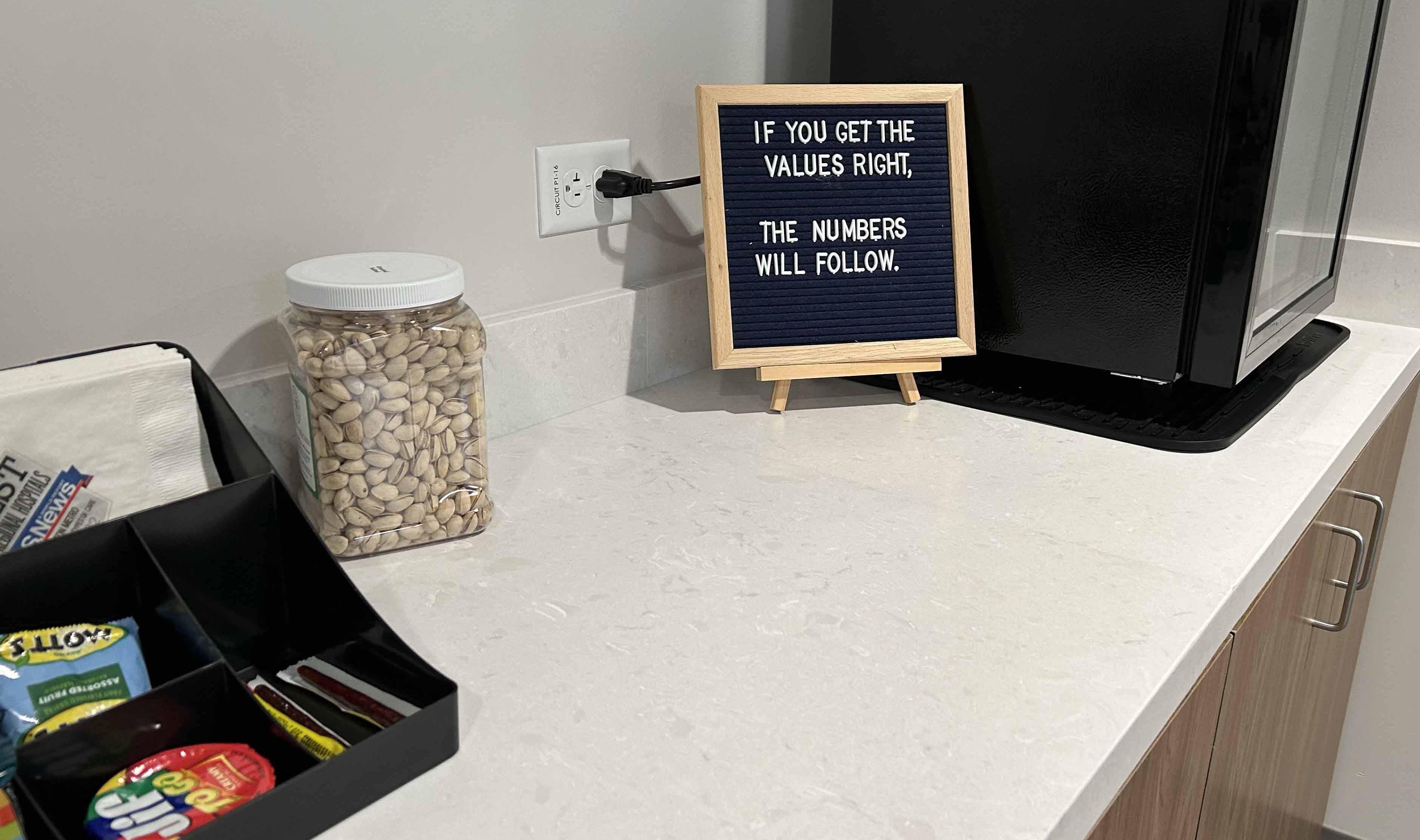
|
Where the Mission Meets the Margin
A Field Study of Organizational Communication at Houston Methodist Hospital |
     
|
|

|
Where the Mission Meets the Margin
A Field Study of Organizational Communication at Houston Methodist Hospital |
     
|
|
 |
Lauren Chisholm is from Laurel, Mississippi. She is a senior at Southwestern University, majoring in Communication Studies and minoring in Business. Although she is working towards a degree in Communication Studies, she hopes to attend dental school to become an oral surgeon. She is excited to be graduating in December 2024 and plans to utilize the semester after she graduates to gain work experience, complete any last prerequisite courses, and possibly take part in some medical or dental research. |
Houston Methodist Willowbrook (HMWB) is a healthcare provider in the Houston, Texas, area, known for its commitment to high-quality care for patients and innovative medical practices. It is part of the larger Houston Methodist system (HM), which is a private, not-for-profit hospital that is dedicated to "leading medicine." The hospital system's mission statement is "to provide high quality, cost-effective health care that delivers the best value to the people we serve in a spiritual environment of caring in association with internationally recognized teaching and research."My shadowing experience at HMWB was extremely enriching, particularly as someone interested in a career in the healthcare field. It was very insightful to see so much of the behind-the-scenes work and communication that is required to keep things running smoothly and aligned.
During my time there, I had the opportunity to observe and interact with both the local and corporate marketing teams, as well as participate in various team meetings, otherwise known as "huddles," and attend a hospital-wide leadership meeting called "stand-up." Uniquely, at the center of all branches of the HM System are the "I CARE" values: "Integrity, compassion, accountability, respect, and excellence." These values truly set this hospital system apart, because these values were practiced every day in the multiple settings we witnessed, ensuring that the mission of the hospital drives everything people do there.
While shadowing, my primary role was to observe and learn from the marketing teams and various other departments at HMW. Before arriving, my expectation was that I would be following someone while they work in their role and take notes on the ways communication played a role. However, after arriving, we found that we stayed together as a class and had a chance to experience a good mix between observing meetings while being in meetings set up especially for us to ask questions. My personal objectives included gaining an understanding of the daily communication and operations of all areas we observed and to observe the culture and dynamics of their meetings, huddles, and communication.
This paper aims to share my experiences and insights from this shadowing opportunity, focusing on the differences between the local and corporate marketing teams, the culture of the huddles, and the alignment within the hospital and between its departments. I aim to dissect the ways the HMH demonstrates and communicates its alignment through the integration of its mission and values into every facet of operations at the locations we visited. This dedication to patient-centered care, as evidenced by numerous initiatives discussed in meetings, is boldly apparent in its marketing strategies and organizational processes.
"Huddle-Board" at HMWB. Photo by Bob BednarLocal Marketing
The local marketing team at HMWB is composed of professionals dedicated to promoting the hospital's services within the local community where the hospital is located, not Houston as a whole. The team includes roles such as marketing managers, event coordinators, and community outreach specialists–each with specific responsibilities to ensure effective local outreach. They dealt with lots of different media monitoring including what was promoted inside the walls of the hospital and out. The team utilizes a brand and editorial guide when making decisions regarding writing and images used for marketing, including Willowbrook Weekly, a newsletter aimed at informing exclusively the staff of current events regarding the hospital.
In addition to monitoring the various forms of internal and external direct marketing, the marketing team also had a responsibility to maintain community engagement by promoting partnerships with various groups surrounding the area such as multiple ISDs and sponsoring sports venues and sports teams in their immediate vicinity. While corporate marketing focused on area-wide sponsorships such as the Houston Marathon, the Houston Ballet, and the Houston Astros and Texans, HMWB focused on a local pickleball court complex and the local Challenge Soccer Club. The marketing team's meetings differed from the operational huddle meetings and stand-ups that we had the opportunity to attend. Primarily, the head of marketing at HMWB attends bi-weekly meetings at the corporate office and has a meeting with the local team later on to relay that information back to the team.
In addition to their promotional duties, the team's operational dynamics are influenced by their hybrid work structure. Some days certain people work from home while others are at the office and vice versa. This means that for many meetings, part of the team is in person while others are dialing in via Microsoft Teams. While this is convenient, it also poses the challenge of technological problems. For example, someone's microphone may not be working and an important point for the meeting may be overlooked, or if a department can not figure out how to use newer technology and it is not addressed.
One notable aspect of the local team's operations was their emphasis on professional development of the whole team. In a reading earlier in this class, we learned about the importance of knowing leadership and personality styles. In Organization Communication: Balancing Creativity and Constraint, the author states, "Today, the concept of leadership communication includes far more than success in the sender-receiver relationship. Giving clear instructions and listening to employees' opinions are just the beginning for leaders" (Eisenberg et al. 2017, 287).
At HMWB, the Marketing Director was very self-reflexive about her role as a leader, and discussed a few of her strategies for making sure communication within her team was as effective and efficient as possible. One way they do this is through having each new marketing team member take a Birkman test. The Birkman method is a framework for assessing personality traits and is often used in organizational settings to help people better understand how their personality traits lead to default communication styles and to determine compatibility among different people on a team. The Birkman test sorts people into 4 personality types coded as colors: red, yellow, blue, and green. For example, while some people may be more direct (red), others who are less direct and want space to reflect on things (such as a blue) may take a short and direct email from the sender as if the sender is angry, when in reality that is just the way they communicate.
As the marketing team described to us, two of them are "reds," but another person on the team is a "yellow," and another is a "blue." As they characterized it, when a "red" talks to a "red," they can use the same style, but when a "red" talks to a "yellow" or a "blue," they try to adjust their communication so as not to be misunderstood. Not being familiar with this terminology before we went to Houston, it was a little odd to hear them refer to people as colors to explain their work processes, but it was clear that they found it useful to facilitate communication.
Additionally, each member of the team is given a budget to put towards professional development which may go towards attending a conference or taking a skills class. Each individual has the freedom to choose what area they want to improve or grow in. The team members also fill out a goals sheet and self review where they state what they want to improve in the coming year, what their goals and aspirations are, and things they feel that they excelled at. I really appreciated the expressed freedom each member of the team has over their professional development and was impressed by how well everyone's goals aligned with that of the hospital's motto.
To conclude about the local marketing team, the daily operations of the local marketing team were dynamic and packed with back-to-back meetings. The team's collaborative approach and clear communication were key to their successful execution of marketing strategies.
Cover of the Houston Methodist Brand Guide. Courtesy HMH Marketing and Brand ManagementCorporate Marketing
The corporate marketing team operates at a broader level, overseeing marketing efforts across the entire Houston Methodist system. This team includes senior marketing strategists, brand managers, and digital marketing experts who develop and implement system-wide marketing initiatives.The corporate marketing team, with its broader scope and strategic initiatives, offered a different and, to me, more intriguing perspective on healthcare marketing than we saw at HMWB.
I enjoyed learning about their digital marketing efforts and strategies as well as the steps they take to align all branches of HM. I found it significant that the Houston Methodist system utilizes one social media handle for all locations. When I asked a question about this highly centralized model in a meeting we had with the team, the benefits became clear, which is to keep all locations aligned with the Houston Methodist mission and brand. They explained that the singular handle is used to promote the hospital system as a whole, so the branches are not competing with each other.
One of the main goals from corporate marketing is keeping Houston Methodist "top of mind when you have a need," which was stated by their VP of Brand Marketing. In order to "prime" consumers to think of Houston Methodist first when in need of medical care, they actively work to associate the brand with a sports team such as the Houston Astros or local high schools (this is also seen in the local level of marketing). Being in the top twenty hospitals in the country and tied for number one in Texas, it is imperative that the corporate marketing is positively impacting not only reputation but consumer preference. When consumer preference is up, then a consumer's actual choice tends to trend up as well. Therefore, the ongoing communication between the hospital and consumers is extremely important. The corporate marketing team's goal is to "create patients for life." This can only be accomplished through strong marketing and communication as well as consumers having actual good experiences within the hospital.
This trickles down to patient-doctor communication and hospital-doctor communication, whether between HMWB and the collective Physician's Organizations that negotiate on their behalf or individual doctors with more direct ties to the hospital. If these communication practices are done well, then consumer preference will reflect the communicative efforts of the system.
The corporate office was able to give us a bit more of an explanation of the brand and editorial guides. Similar to having one social media handle for HMH, the purpose of the brand and editorial guides are to keep language and branding the same across locations and to ensure all locations "talk with a leading tone." As previously stated, Houston Methodist is dedicated to "leading medicine," which is a branded tagline that has been added to their logo. This was added in 2013 to set Houston Methodist apart from other competitors and to set the tone for leadership as the expectation.
In summary, the corporate marketing team's comprehensive approach, strategic alignment, and dedication to maintaining a unified brand image plays a pivotal role in positioning Houston Methodist as a leader in the healthcare industry. Their efforts not only enhance consumer preference but also work to ensure a consistent and positive experience for patients across all locations, solidifying the hospital's reputation as a top healthcare provider, and in my eyes, a leader in healthcare communication.
Local and Corporate Marketing Comparison
The primary difference between the local and corporate marketing teams lies in their strategic focus. The local team concentrates on community-specific campaigns that address the needs and interests of the local population. In contrast, the corporate team develops overarching strategies that enhance the brand and visibility of the entire Houston Methodist system. Operationally, the local team engages in more hands-on, day-to-day marketing activities, including event planning and local advertising. The corporate team, however, focuses on high-level planning, digital strategy, and system-wide campaigns that require coordination across multiple locations.
Observing both teams, I learned how essential it is for marketing efforts to be both locally relevant and strategically aligned with the broader organizational goals. Additionally, both teams work hard to keep communication and marketing consistent with both their activity in advertising and consistent as a brand, despite their differences, and the weekly Marketing Leadership Team (MLT) meetings ensure that all the moving parts keep moving together. Each team adapts to its unique challenges, with the local team being agile and responsive to immediate community needs, and the corporate team ensuring alignment and brand integrity across all locations. This comparison underscores the different yet complementary roles both teams play.
Alignment of Values and Mission
Finally, while we saw many examples of staff focused on "the margin," by discussing key bottom-line metrics, we also saw many examples of staff focused on the mission. Both seem inseparable at Houston Methodist.
HM's alignment is evident in how its mission and values permeate every aspect of its operations at both locations we visited. The hospital strives to provide patient-centered care, which was proved in many meetings by various initiatives, and this commitment is reflected in its marketing strategies and administrative processes. For instance, marketing efforts that accurately convey the hospital's capabilities and values help attract patients who benefit from the hospital's high-quality care. Additionally, well-coordinated internal communications ensure that all departments are working towards common goals, enhancing overall efficiency and patient satisfaction.
Something that stood out to me about every meeting we had and every person we met was that the "I CARE" values were mentioned every time. Each member of staff that we had the opportunity to meet never failed to discuss the importance and impact of the "I CARE" values on the work culture and on the hospital as a whole. Additionally, all of these employees knew exactly what the values stood for, would list them for us, and would explain that they have never worked anywhere else that the values so closely aligned with the true mission of the hospital.
Integration of Marketing and Internal Communication
The alignment of the Houston Methodist marketing strategies with its mission and values is not only evident in external communications but also mirrored in internal communications through daily practices like huddles and stand-up meetings. Huddles at HMW are short, focused meetings designed to enhance communication and coordination among team members. These meetings, sometimes opened with a prayer, foster a collaborative and supportive atmosphere, reflecting the "I CARE" values. Stand-up meetings, held daily at 8:40 am, involve representatives from each department, encouraging communication and accountability across the hospital. The main takeaway from these meetings is the emphasis on "patient-centered care," a priority reflected in all departments.
Conclusion
In conclusion, this experience at HMWB and HMH was incredibly valuable to me. At both locations we visited, the Houston Methodist Hospital system showcases a strong alignment with its mission and values, permeating all aspects of its operations. This commitment to patient-centered care is supported by various initiatives highlighted in meetings and is mirrored in its marketing strategies and administrative procedures. It provided me with a more comprehensive understanding of communication within healthcare marketing and the inner workings of a leading hospital (which was far more intricate than I had anticipated).
I gained numerous insights, including ways the team develops effective marketing strategies, the importance of collaboration, and the role of communication in team dynamics. I also became knowledgeable about the differences between local and corporate marketing teams, the culture of team huddles, and the alignment within the hospital and between its departments. I am grateful for the opportunity and look forward to applying what I have learned in my future career.
     
|
|
Design © 2024 by Bob Bednar and Alexa Delenela
Contact: |